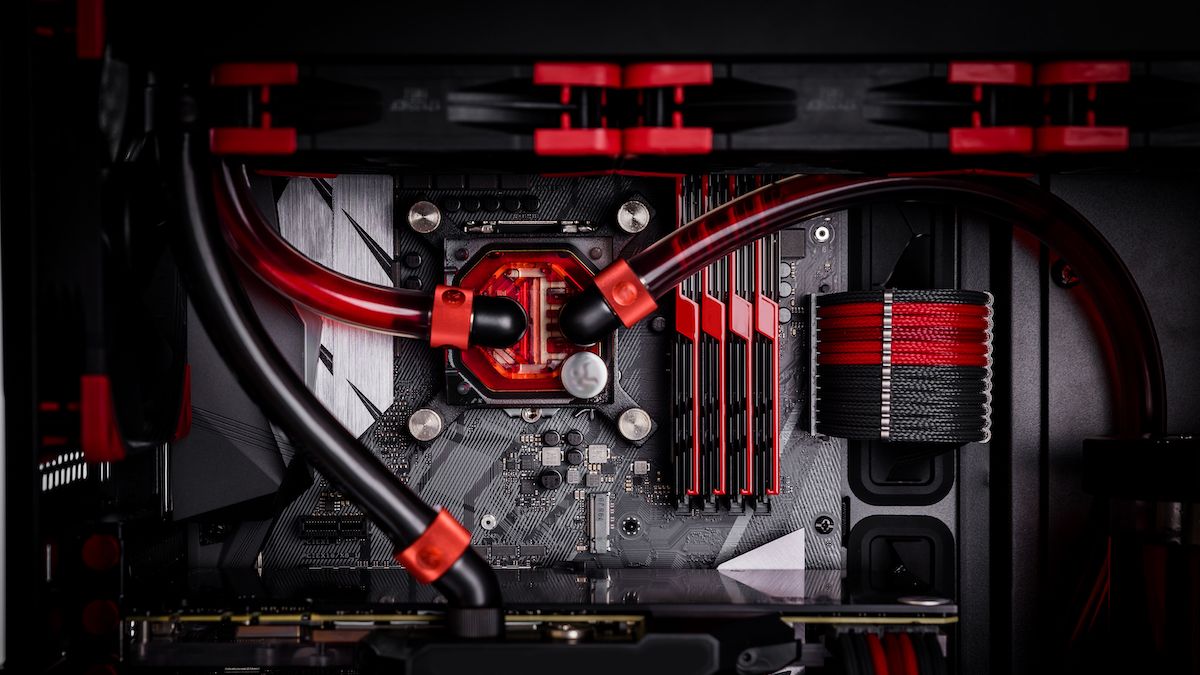Key Takeaways
- Aesthetics, performance, and customizability are the primary reasons why enthusiasts prefer custom loop cooling in PCs.
- Custom loops allow for unique looks with colored liquids, LEDs, and various fittings.
- Custom loops can be easily customized and upgraded but require regular maintenance and can be expensive.
The reason why performance-chasers prefer water cooling in their PCs is clear—water transfers heat better than air. But with recent advancements in all-in-one (AIO) water coolers, one can’t help but wonder why some still opt to build custom loops.
Why Do People Do Custom Loop Cooling?
There are three primary reasons why enthusiasts prefer custom loop cooling over AIOs and high-end air coolers—aesthetics, performance, and customizability. The first reason is pretty self-explanatory, but it’s undeniably true: custom loops are sick! Colored liquids, LEDs, and even fittings can give your computer a unique look.
Want an industrial look? Copper tubing. Sci-Fi? Neon green coolant and a blacklight. All sorts of otherwise hard-to-achieve looks are unlocked with custom loops.
As for performance, custom loops can achieve the best overclocking results, short of liquid nitrogen. If you combine a high-end water block with a large radiator, your CPU and GPU will always run cool, even under full, extended loads.
But the strongest argument for custom loops is customizability. You can mix and match parts together to tailor the loop to your needs. Even better, you can easily swap parts out if you want to improve the cooling, expand to cool your GPU as well, or if something breaks. Plus, you can use certain components for a decade—like radiators and pumps—as long as you take care of them.
Custom Loop vs. AIO Water Cooling
AIO water coolers are fully enclosed, meaning you can’t switch out any parts aside from the radiator fans. This makes them unsustainable and hard to repair, and the pump is usually the first to fail. Custom loops are fully customizable, so if something fails, it’s easily fixed or replaced.
As for upgradability, both AIO and custom loop coolers can often be carried over to a new computer, at least to an extent. AIO coolers generally offer wide, universal compatibility thanks to easily swappable mounting brackets. You can use a universal CPU water block with a custom loop, too, but you also have the option to upgrade to CPU-specific models to cover the whole integrated heat spreader (IHS) and achieve superior performance.
A custom loop can be more powerful than an AIO water cooler because you basically have no limits. If you want to go absolutely nuts, you could combine three enormous 480mm radiators and multiple pumps. AIO coolers typically don’t have powerful pumps and often come with 120mm or 240mm radiators. They’ve only recently started releasing AIOs with larger radiators like 360mm. That said, AIO coolers easily offer a better bang for your buck and take a fraction of the time to install.
To hammer my point home, a custom loop’s main advantage over AIO cooling will always be the freedom you get with options. You can mix and match different materials, radiators, pumps, water blocks, and fittings. An AIO is a fully enclosed system, so you can’t use a single loop to cool both your CPU and GPU. You’d have to get one for your CPU and one for your GPU, either through a water block or mounting bracket for a CPU cooler.
Leave Custom Loops to Enthusiasts
You can’t beat the simplicity and effectiveness of air and AIO CPU coolers. Traditional coolers are a no-brainer even for enthusiasts who want the best performance and to overclock. They don’t require regular maintenance and complicated installation procedures. The few degrees you shave off with custom loop water cooling aren’t worth the extra headaches that they cause. I mean, do you really want to spend your free time worrying about galvanic reactions between metals?
But if you’re absolutely in love with custom loop water cooling and don’t mind the regular maintenance requirements and tinkering with your computer, go ahead. Just be aware that custom loops are an expensive and time-consuming hobby, so only do it if you love the idea of having a unique, top-performing cooling solution.
source
